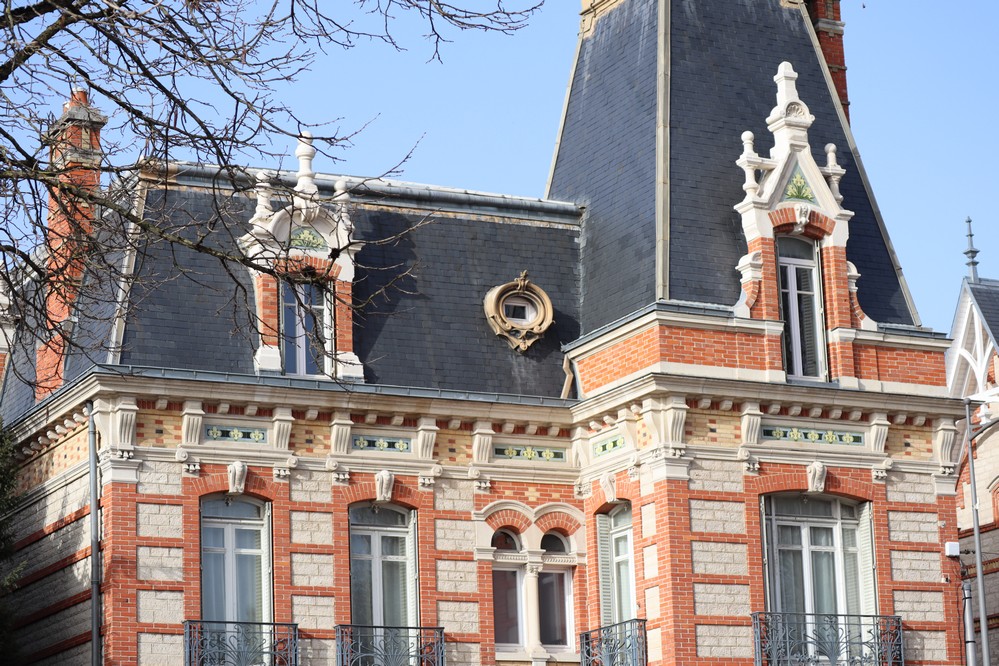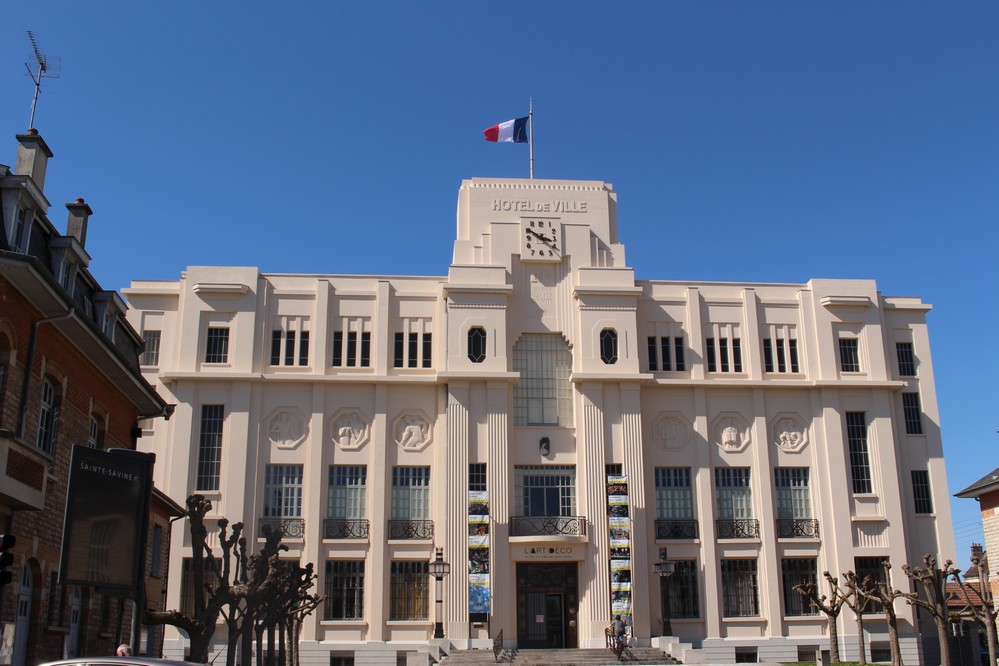Wood and Stone
Troyes, the timber-framed city
There are many cities in France and Navarre that still boast high-quality wooden buildings. Yet it is Troyes that arguably has the most extensive, uniform, and best preserved or restored heritage.
The timber-framed houses
Having almost disappeared entirely, this incredible collection of timber-framed houses from the Middle Ages and the Renaissance is now the pride of all Troyes. With their picturesque style and multi-coloured appearance, these buildings tell the story of an ever-changing city – a story that is far from complete.
If you wander through the streets of Troyes, you cannot help but notice the extraordinary collection of timber-framed houses that punctuate the landscape. The city undoubtedly boasts one of the most stunning and extensive collections of buildings made from this construction, also known as “half-timbered”. These buildings, with their characteristic vertical, horizontal or diagonal stripes, have their skeletons on show for the whole world to see. These exposed features reveal the wooden structure that lies beneath.
The great fire
Yet this incredible heritage was almost lost forever. Indeed, its origins can be traced back to a major disaster in the city. Almost all of the timber-framed houses that exist today date from after the great fire of May 1524. This vast inferno ravaged a quarter of the city, reducing around 1,500 dwellings to ashes and leaving some 7,500 people homeless.
On a map of modern-day Troyes, the fire covered an area extending roughly from Boulevard Victor-Hugo to Rue Louis-Ulbach, and from Rue du Palais-de-Justice to Boulevard du 14-Juillet. It obliterated the city’s most affluent district, which was home to rich merchants, and destroyed all of the churches in its path. No sooner had the fire been brought under control (a process that took a little over two days), than Troyens set about rebuilding their city.
Timber-framed buildings based on a medieval design
The wealthier residents built new homes from stone, giving us the stunning mansions that we can still admire today. Those with more meagre resources were forced to replicate the timber construction of their former houses.
These Renaissance-period timber-framed buildings are therefore based on a medieval design, and it is this facet that gives the city its unique charm. These days, this era is referred to as the “beautiful 16th century”. It was a time when Troyes was an artistic, cultural and architectural hotbed.
Yet wood has not always had the same reputation – as a luxury material – that it enjoys today. In fact wood, and oak in particular, was such an abundant resource in the forests surrounding the city that it was a favoured choice with the lower classes. As a flammable material, it was largely frowned upon, due mainly to the fact that Troyes had been ravaged by fire on numerous occasions.
Following the Sully Edict of 1607, steps were taken to hide these wooden structures, covering them with a protective, yet ugly coat of render that can still be seen today on several unrestored houses.
The post-war decline
In the aftermath of the Second World War, Troyes was an unattractive city with a serious image problem. It was covered with filth and damaged by the ravages of time. In some places, the city was a genuine cesspool, and its houses were dilapidated, in a state of disrepair and in a truly pitiful condition. Parts of the city became little more than slums, or “unfit hovels”.
The only answer was to sacrifice the most destitute neighbourhoods for the sake of modern comforts. Next came the massacre of timber-framed houses, with some of the city’s oldest examples falling victim to this slaughter.
The old Troyes Preservation
Was it really necessary to erase all traces of the past so indiscriminately? There were some who believed in defending the city’s heritage and took it upon themselves to try to stop the massacre and save anything of value. In the late 1950s and the early 1960s, the Association de Sauvegarde du Vieux Troyes (Old Troyes Preservation Association) appeared on the scene. Later renamed Sauvegarde et Avenir de Troyes (Troyes Preservation and Future), it remains with us to this day. The association’s volunteers have fought a spirited campaign to convince successive local governments of the importance of saving the city’s heritage on the verge of extinction and, more importantly, of the need to restore the city’s former glory.
Some 50 years after its inception, it could certainly be argued that its efforts have not been in vain. In fact, the association has more than exceeded its ambitions.
Troyes of Glass and Iron
Cast-iron quality
In 2003, famous clothing brand H&M unveiled an unknown facet of Troyes’ architectural heritage, revealing the stone, metal and glass façade of a former department store. The building was constructed in 1896 by a Parisian architect and subsequently converted into a cinema. Metal structures are a rare sight in the city where timber frames reign supreme.
The central market hall, completed in 1874, is an exception to this rule. The architect drew his inspiration from the market halls built shortly before in Paris by Victor Baltard. The architect designed an iron and cast-iron nave, with brick in-fill in the lower section and glazing above, covered with a long-beam roof with a central double roof lantern. A mezzanine was added in 1987 during renovation work on the building.
It’s “Nouveau”, it’s Deco”
Steeped in a strong 16th century identity, other architectural styles have sometimes had trouble making themselves heard in the lovely town of Troyes. Despite that, Art Nouveau and Art Deco have succeeded in leaving very beautiful traces of their passage, including outside the town.
The Caisse d’Epargne bank and the magnificent Viardot villa are two beautiful examples of Art Nouveau.
A little further, on Boulevard Carnot, stands the Pozzi villa, also known as the Héraut villa because of the herald statue erected on the pinnacle of the roof.
Continue along the boulevards surrounding the historical heart of Troyes, to admire the Marinot villa on the corner of Boulevard Victor-Hugo and Rue Jeanne d’Arc
Following behind Art Nouveau, Art Deco left an even greater stamp on the town.

There are three absolutely remarkable examples in Troyes.
- The Maison des Associations in Avenue Pasteur has beautifully enhanced the former head office of the Economique Troyens, the forerunner of mass-market retailers.
- The Lucien-Zins swimming pool (that many Troyes residents still call the ‘Vouldy pool’) cleverly conceals its reinforced concrete structure under a superb brick facing. Inside the building are two stunning galleries overlooking the pool, bathing in the light shining through the glass roof.
- In Rue Raymond-Poincaré in the town centre, the former central post office introduces ceramic to the predominant brick and stone. The entrance is a curved angle topped with the national post office PTT logo. It is still possible to read the principal mail destinations engraved in the stone.
In that same street, at no.4 and no.12, two buildings show that Art Deco did not consider itself above more mundane constructions.
There are other examples scattered throughout the town: Boulevards Carnot, Jules-Guesde and Charles-Delestraint; Rues du Petit-Credo, de la Monnaie, Général-de-Gaulle, Colbert, Grenouillet, Gustave-Michel, Hector-Pron, Ambroise-Cottet; and Impasse Clémence-Fénard, etc.
But the best example of this architectural style which reared up between 1910 and the 1930s is next to Sainte-Savine, a neighbouring town, where stands the imposing former town hall, today the “Maison pour tous” or “Art Deco” (Avenue Général-Gallieni).

Art Deco reaches its zenith in this construction: a geometric composition on the facade, horizontal and vertical patterns, the importance given to decorative wrought iron elements and bas-reliefs, and glass roofs including that on the other side of the building which is not to be overlooked, with a cornice and a bell tower…
This spectacular edifice covered with white cement inspired other much smaller constructions not far away. Other town halls (Buchères, Saint-Julien-les-Villas) are also splendid examples of the roaring twenties design.
There are also several schools from the movement in the area: Paul-Bert in La Chapelle-Saint-Luc, Robin-Noir in Saint-Julien-les-Villas, Alphonse-Daudet (ex-town hall and school) in La Rivière-de-Corps, but most important of all, Paul-Bert in rue Edouard-Vaillant in Troyes.
Built on the site of the former velodrome, the school is decorated with an outstanding mosaic frieze which features games, toys and lessons from the period. A genuine history book under the open sky.
